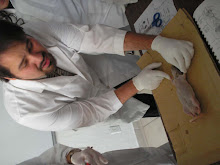sexual vs asexual
good bad
recombinatio slow
survival expensive
need 2 cells easy
Sexual reproduction need haploid cells and a crossing over.
Crossing over is needed for variability of gens
We saw some videos were they explain the types of sexual and asexual reproduction
Types of sexual reprodduction
internal
external
Types of asexual reproduction
Binary fission
iw a division in two parts wich each have the potential to grow to the size of the original cell
Budding
the two resulting cells are not equal size
Fragmentation or Clonal Fragmentation
(reproduction or cloning) a organism is split into fragments. Each fragment develop into mature ,
fully grown individuals that are a clone of the original organism.
the mothers cells are very important in this reproduction.
Spores genesis
the type of reproduction that the fungi family use. Is by spores; the spores go out of the mashroom (in this case).
It can be male or female spores and mashrooms; and then this mashrooms trough female or male spores. This
female or male spores need the opposite spore to build a diploid mashroom.
Regeneration
is said to regenerate a lost or damaged part if the part regrows so the original function is restored.
Partenogenesis
this is ffound in female where growth and development of embryos occurs with out fertilization by a male.
Hermaphrodistism
is only in animals and plants; they have both male and female reproductive organs, only one works correctly.
Intersex
is only in humans; they have both male and female reproductive organs, only one works correctly.



